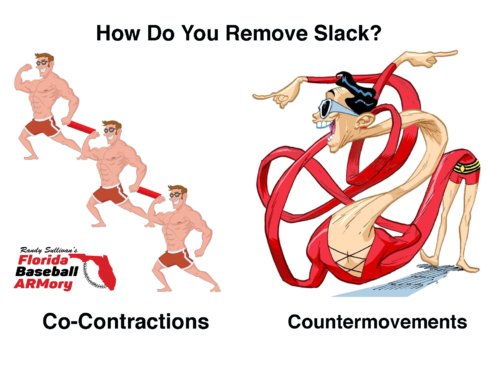During the past several years, weighted ball training has polarized baseball player development.
Some would have you think weighted balls are a panacea for pitcher development.
Others suggest coaches who prescribe weighted ball training are irresponsible, reckless, or even downright evil.
Our view of weighted ball training is a bit different.
First, we don't believe weighted balls are inherently dangerous. Nor do we believe they are the “end-all-be-all” in player development.
I grew up in a family without unlimited financial resources. Baseballs were a luxury, and we used them until the covers wore off. Often we wrapped our tattered baseballs in electrical tape and hit them with broken wood bats.
I'm pretty sure every ball I ever threw as a child was a “weighted ball.”
I also coached my three sons in travel ball for many years.
If you've ever been a part of a 9:00 am Perfect Game contest in Fort Myers where the 20-year old field attendant was issued three baseballs for the day, you may have noticed the rooster tail behind every ground ball.
By the 3rd inning, I'm positive both pitchers were throwing balls weighing 8 ounces or more.
We view weighted ball training as a valuable tool for adding variability to a highly specific task. Like any other training modality, it can be dangerous if improperly applied.
So how do you properly apply it?
First, you pick the right candidate.
Only about 10-15% of our clients throw weighted balls.
We rarely use them with players who aren't musculoskeletally mature, and we typically don't start with them right away.
After about 4-6 weeks of training, if the athlete's movement is stable, we might consider implementing a weighted ball program.
This on-ramping period is necessary to ensure the athlete's connective tissue has had the chance to adapt to the new stresses it needs to manage.
If the athlete is making steady progress in velocity, command, arm health, and secondary stuff, we probably wouldn't consider starting a weighted ball program.
However, if gains begin to stagnate, it may be time to add a little variability.
The value of weighted ball training is not in developing “arm strength and arm speed.”
Its value is in allowing the athlete to rehearse adjustments.
Remember, you can't repeat your mechanics, so you need to adjust your movement on the fly to be an elite thrower. The quicker you can adjust, the more efficient your movement will be.
When you learn to adjust rapidly, you throw harder, throw more accurately, and reduce injury risk.
When we decide to implement a weighted ball program, we usually start with constrained drills like Reverse Pronations and Marshalls.
We prefer to use seamed weighted baseballs, but alternating with softer plyoballs can be useful. We have found that athletes who throw an excessive amount of plyoballs sometimes start cutting the ball.







